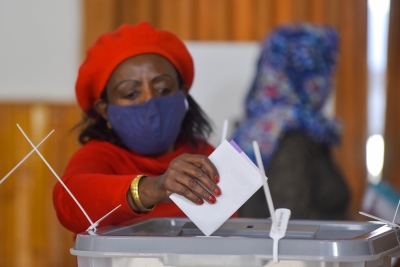As Covid 19 pandemic impacts health and economy, debt levels in African countries are rising at alarming levels. Angola, Ethiopia, Kenya, Sudan, Congo, Zambia, Cameroon, Nigeria top the list of countries with a high level of debt.
Earlier this week, Kristalina Georgieva, Managing Director, International Monetary Fund noted that debt levels—which were already elevated before the pandemic—have increased sharply. Public debt in sub-Saharan Africa jumped by more than 6 percentage points to 58 per cent of GDP in 2020, the highest level in almost two decades, she said.
“Africa is now facing the world’s fastest growth rate for new COVID cases, with an exponential trajectory even more alarming than during the second wave in January,” Georgieva added.
The Road Ahead for Africa—Fighting the Pandemic and Dealing with Debt
As debt levels rise, African nations are looking for Chinese assistance.
Recently, Congo reached out to China urging the latter to restructure its debt. Beijing obliged but concerns over China’s lending pattern have risen.
This is not the first time that China has agreed to restructure Congo’s loans. In 2019 too, Beijing had restructured a loan agreement with Congo, which allowed the latter to enter into an Extended Credit Facility-focused program with the IMF and unlock a $449 million loan. But that did not help Congo. “Congo's debt was since then assessed at 110 per cent of the Gross Domestic Product forcing the IMF to consider the country's economy as ‘unsustainable’,” Africa News said.
Also read: India lends a helping hand to Kenya as China's African Safari sends jitters
The Carnegie Endowment for International Peace in a study noted that while China is the largest bilateral lender for public sector loans across the African continent there is little information on the specifics of the lending and investments.
The study added that China has been following the resource-backed lending model —in which the borrowing country commits future revenues to be earned from its natural resource exports to pay loans secured from creditors.
Also read: India must work out a mechanism to be part of Africa's mega trade deal
“Though most African nations are now dependent on China, trust deficit is rising fast and more and more people in Africa are becoming wary of Beijing’s way of doing business,” a school teacher in Zimbabwe, who is not authorised to talk to the media, told India Narrative.
In fact, Nairobi News, last month in an article, pointed out that China has “in the past decade or so been involved in several multi-billion shillings projects on the continent, amid reports of kickbacks, a lack of accountability to a certain level and high interest rates passed on to the struggling African economies.”
China’s financing model though comes with conditions are easy compared to other conventional sources. “Through this method China achieves the twin goals of economic penetration and strategic leverage,” the Institute for Security Studies said.




















